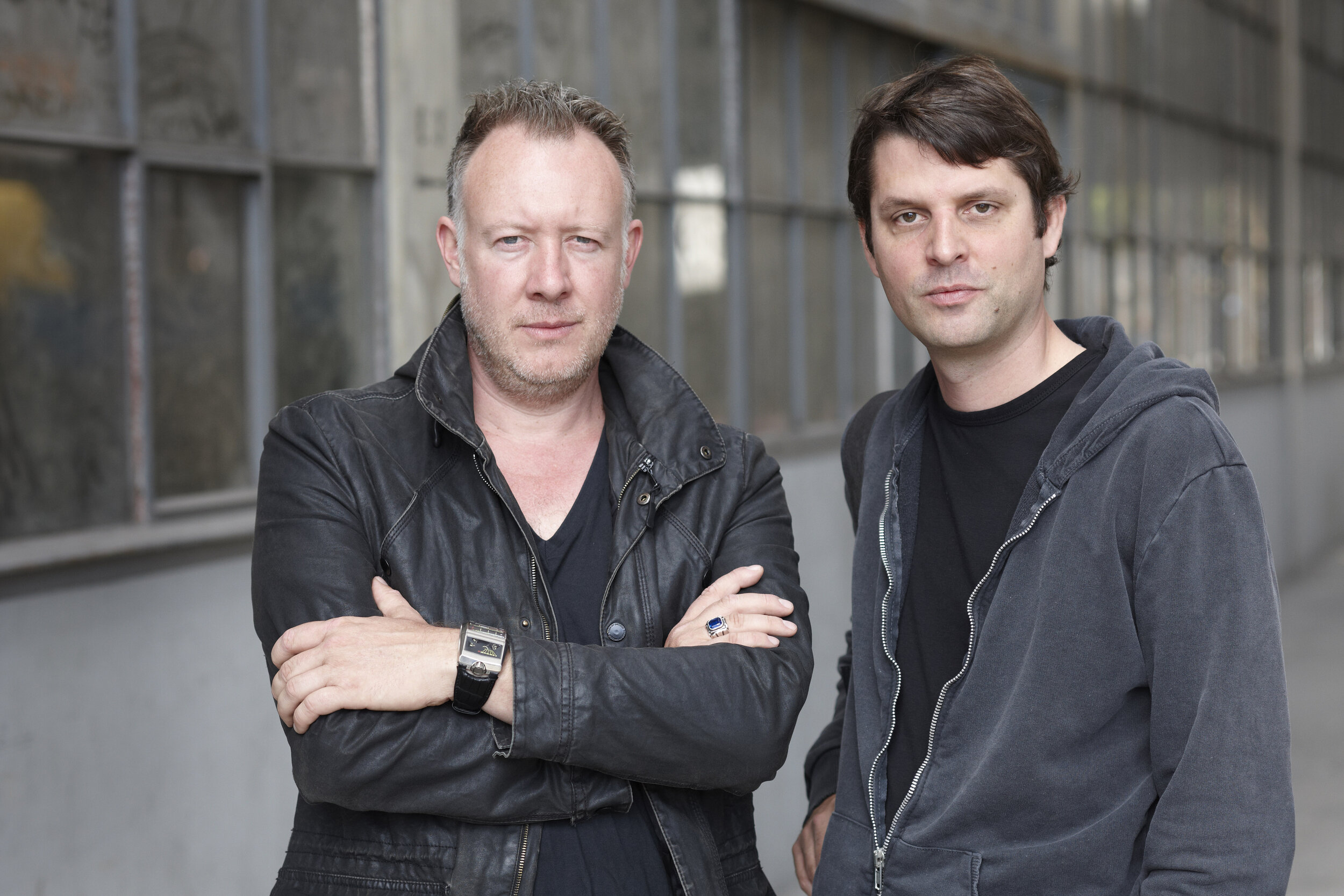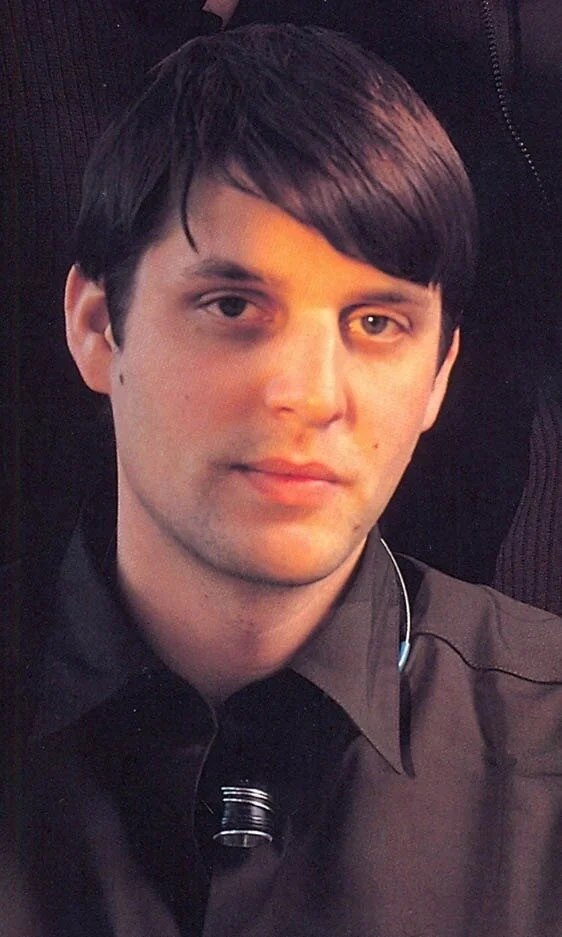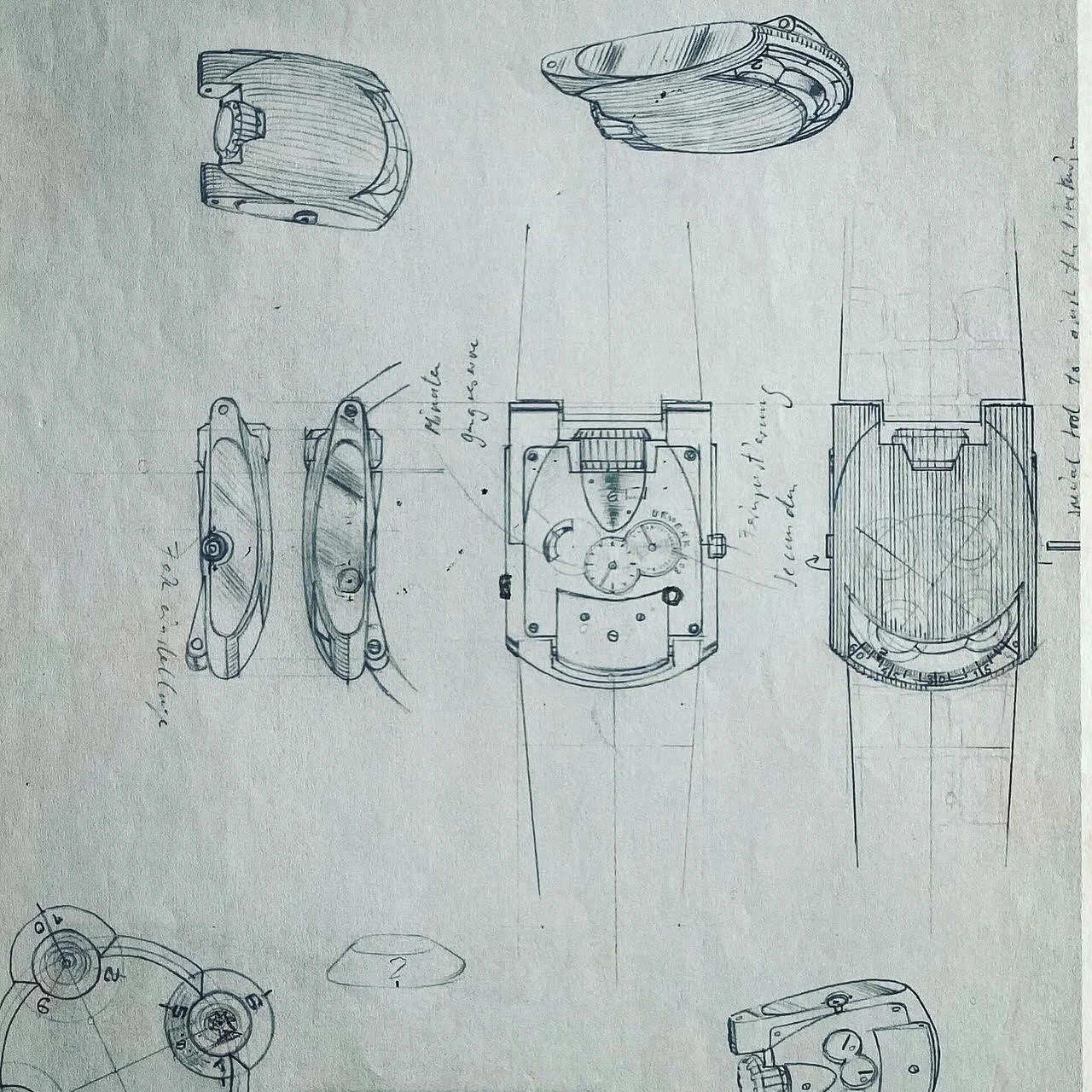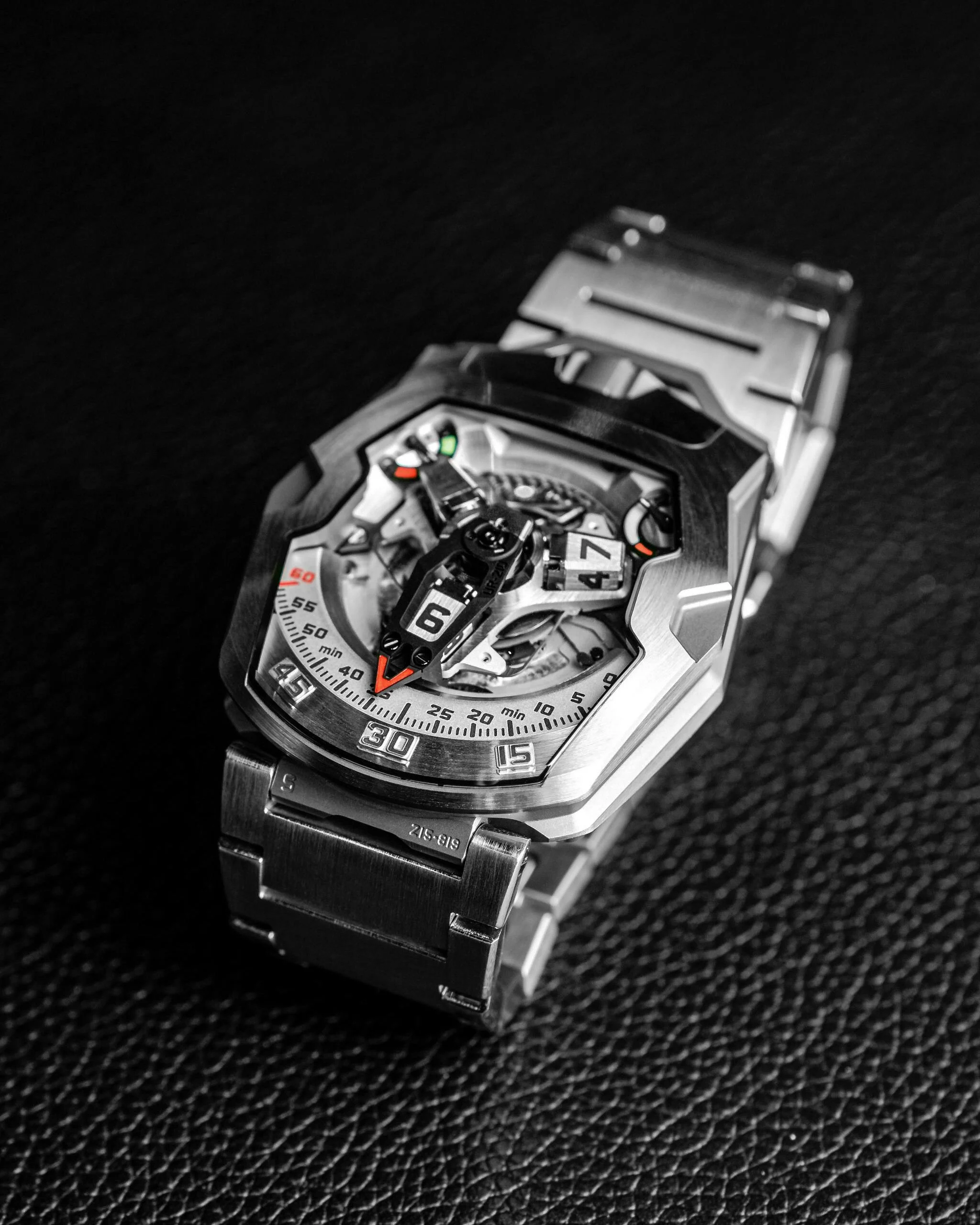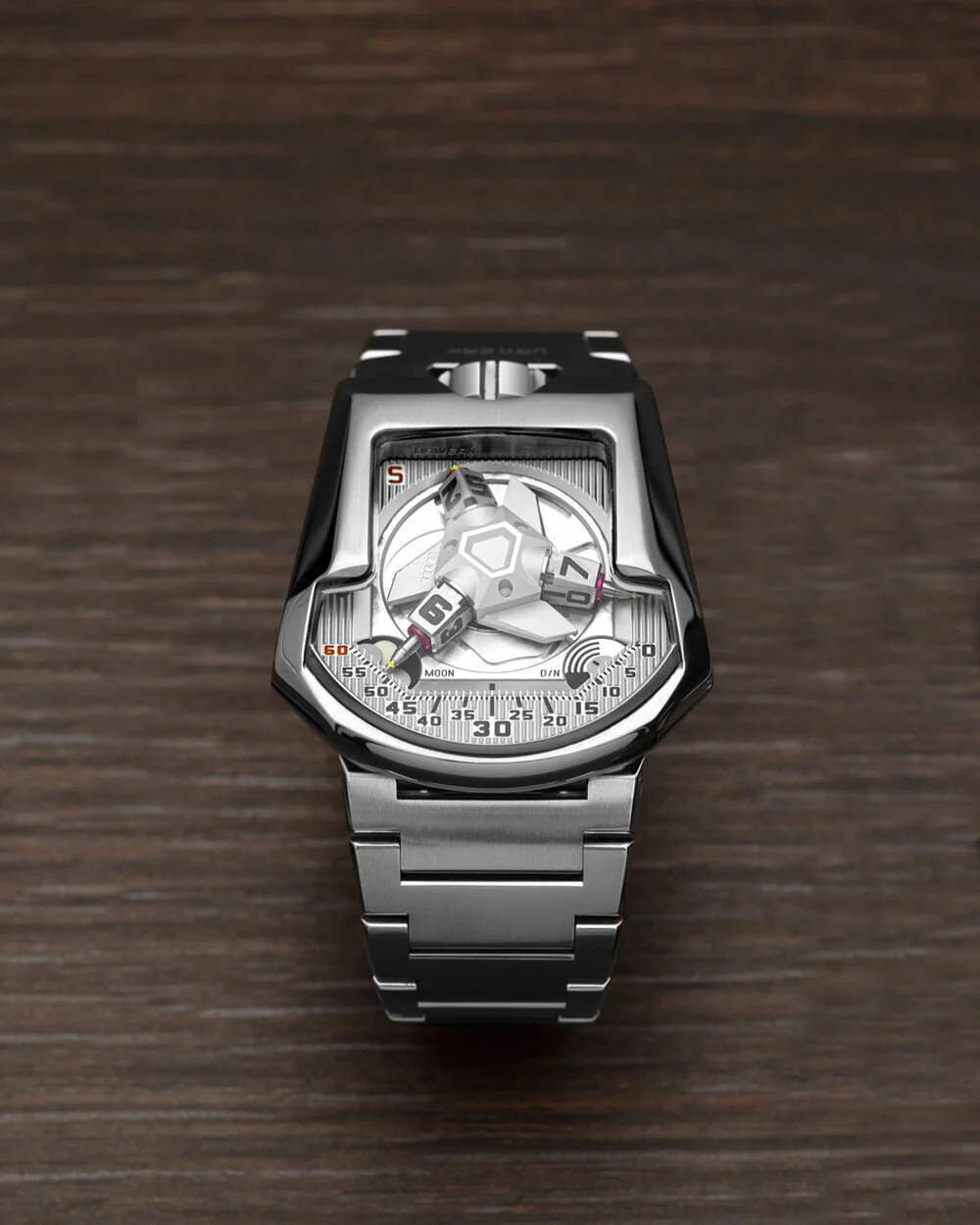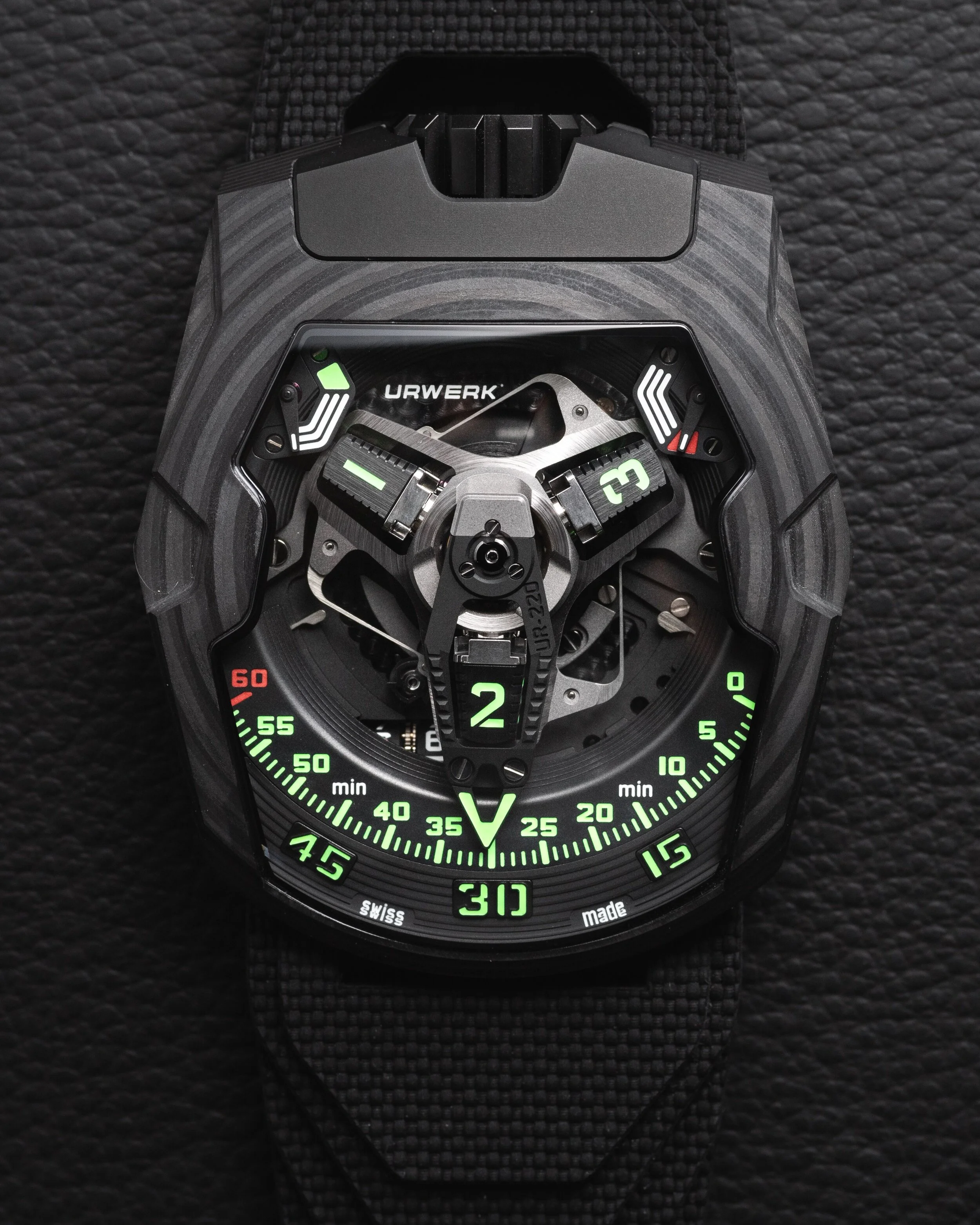When Worlds Collide: The Story of Urwerk
As early pioneers in modern independent watchmaking, Urwerk's founders, Martin Frei and Felix Baumgartner, have been working together for more than 25 years now. Together with their team, they have pushed the boundaries of horology with space-age aesthetics and unusual complications. Though their aesthetics are “modern” through and through, one of the most stark, modern characteristics of Urwerk lies in the founders and their relationship to one another. Martin, an artist by training, and Felix, a third-generation master watchmaker, were, at least in the mid-1990's, a very unusual pair, working together on unusual timepieces.
Martin Frei & Felix Baumgartner (Image: URWERK)
So what about the partnership between these two creators gives Urwerk its heart and soul? How does a watchmaker and an artist work together to create innovative timepieces? Where does one begin to even think conceptually outside of the box? These were questions we pursued when we spoke to Martin and Felix recently. Building on the theme of what it means to be modern in watchmaking, what it means when worlds collide, their answers shed light on one baseline fact: to do something innovative, every endeavour requires fresh lines of thinking.
Before we dive into how Martin and Felix leveraged their unusual relationship to create some modern icons in independent watchmaking, let’s first lay the foundation for Martin and Felix’s connection. Like so many great things, it all began while partying.
Background
Felix and Martin met through a mutual acquaintance back in the early-1990’s at a party. When we spoke, Martin commented that the first meeting with Felix was immediately interesting and different. Compared to his usual surroundings in art school, he noted, Felix appeared to be laser focused. To this day, Martin still thinks of the sheer concentration of watchmakers on their object of study and creation to be amazing. Felix, inversely, quickly recognized a type of openness to Martin’s thinking, curiosity and creativity that constantly attempts to push beyond the status quo of how things are made and in what shape.
It is a broad brush generalization, but artists tend to be conceptually promiscuous folk. It’s not uncommon for an artist to traverse painting, photography, sculpture, and design, as many of the legends in artist history have. Martin is very much in line with this tradition, working across painting, sculpture, photography, and horology. Every medium has its own strengths and weaknesses. And within horology, Felix hasn’t always thought of timepieces through the lens of wristwatches. Felix’s father was a clockmaker, and that’s where his familiarity with horological mechanisms began before shifting to their miniaturized siblings.
At the time of their first encounter, Felix was coming off the heels of working with Svend Andersen - one of the OG’s in independent watchmaking and co-founders of AHCI. Then, Martin was primarily interested in photography as a graduate of art schools. Fundamentally, their overlapping interests in time - both mechanically and conceptually - brought the pair together. And together, from the onset, they began asking fundamental questions about time and horology, past and present.
A Young Felix Baumgartner (Image: URWERK)
“Do things have to be this way?”
We discussed in our other article that the late 1980’s and early 1990’s were rife with the development of traditional complications. It was, after all, a “complications arms race” that revitalized the luxury watchmaking industry. Tourbillons, perpetual calendars, and annual calendars began to proliferate the market after decades of relatively “simple” timepieces occupying production bandwidth. These background conditions set the stage to grasp what make Martin and Felix special, then and now.
Responding to the reality surrounding watchmaking then, Felix mentioned that the original raison d’etre of Urwerk was to question the dominant values of the time. One of the central lines of questioning revolved around traditional high complications and precious metals. Does the highest form of watchmaking require a tourbillon and a traditional precious metal, i.e. gold and platinum? Is a watch “better” if it has more than one high complication? At that time, the broad industry consensus was astoundingly, yes to both questions.
Yet, when Felix and Martin asked these fundamental questions, they knew that creativity and innovation usually begins with a critical question - do things have to be this way? And of course, the answer is no. Against the grain, there are always other possibilities.
An early sketch by Martin Frei of what would become the Urwerk’s first watch, the UR-101 (Image: Martin Frei)
Every artist has a rebellious streak
With an awareness of the status quo, Martin and Felix plotted a line of flight. And in this, we can catch a glimpse of what makes the duo’s creative parternship special.
Martin and Felix, combining their backgrounds, interests, areas of expertise, fuse the best of the art world with the best of horology. What we mean here though isn’t material to Urwerk’s design and timepieces - this is more about how they think of tradition, creativity, and the future. The questioning of tradition, as history shows, acts as a foundation for every creative endeavor.
From impressionism to pop art, every artistic movement has a rebellious streak. The questioning of fundamental values is a core element of aesthetic shifts in the history of art. Rebellion, if I’m permitted to categorize Urwerk’s approach as such, began with the transgressing of all rules of the 1990’s. Exclusively precious metals? No, titanium or steel will be in the mix. Traditional complications? No, the opposite thereof. Where many watchmakers and brands work within the bounds of established tradition, Martin and Felix worked to escape the limits imposed by history.
Here we can find some of Urwerk’s secret sauce - the creativity of their timepieces comes from a distinct coupling of the thinking of an artist. It’s political, rebellious, it has to do with a vision of the world. Every shift in aesthetics has a huge bearing on the past, present, and future. Every shift in aesthetics whether it’s in painting, sculpture, or horology recognizes the status quo and tries to break free.
Nearly 30 years later, those transgressions of values in watchmaking have created space for an entire new branch of horology in the future. So with a sense of what makes Martin and Felix’s partnership so fruitful, let’s look at exactly how they applied their thinking to create some of Urwerk’s most iconic timepieces.
Pushing past the status quo
The brand’s first timepieces, the UR-101 and -102, were the answer to Martin and Felix’s fundamental questioning of horology. These timepieces included the now iconic display of time, using a satellite hour, or wandering hour, mechanism. Inspired by 16th century night-clocks used by the Pope, the duo drew inspiration out of obscurity and focused not only on complication - the wandering hours - but also form. The “Millennium Falcon” case shape, usual then in the late 1990’s, remains quite unusual today.
An early sketch by Martin Frei of what would become the Urwerk’s flagship model, the UR-103 (Image: Martin Frei) (Image Credits Martin Frei)
And of course, the brand’s impulse to push beyond limits doesn’t stop with the satellite time indicator. It continued with the UR-103, UR-210, and UR-220, moving from a two-dimensional display of time to increasingly complex and three-dimensional wandering hour complications. Beyond the satellite hour complication, the most ambitious and contrarian project might be the AMC and EMC timepieces. Both represent a reinvigoration of precision chronometry in mechanical watchmaking, and bold beyond belief.
As Felix mentioned, mechanical watchmaking has long waved the white flag of surrender for precision timekeeping. Traditional horological mechanics simply can’t hold a candle to both modern quartz and atomic timekeeping technologies. But the separation between modern and precise (atomic/quartz) and traditional and less precise (mechanical) is a self-made prison. The AMC/EMC projects are a symbol that traditional and modern technologies can play nice together in the sandbox.
Pioneers in conceptual watchmaking
Taking a step back, we can see that what makes Felix and Martin so special is their willingness to probe orthodoxy, then and now. Using the skeptical or rebellious spirit of art movements, the duo’s approach to watchmaking is what we loosely name “conceptual horology.” With every Urwerk timepiece, the focus is taken away from the complication, material, or display of time, singularly. Rather, each timepiece brings together all components --complications, materials, and novel displays of time-- to produce something that works on a conceptual level in the history of horology. Pushing beyond traditional complications, shapes, and materials, each Urwerk timepiece strives to open up new possibilities in how other watchmakers and artists think about and conceptualize their own timepieces.
Martin commented, in a quick passing remark, that he sees each Urwerk timepiece intentionally placed within a larger conversation, with other timepieces from the brand and of course, with outside references in horological history as well. When we look at these timepieces now, we know that the conversation being had is fundamentally about watchmaking norms, values, and limits.
- Special thanks to Mike Ortolano on his research and interview process, and to Martin Frei and Felix Baumgartner for their invaluable time and insight.
For more information on Urwerk’s journey and their timepieces, please don’t hesitate to reach out to our team at EsperLuxe.

